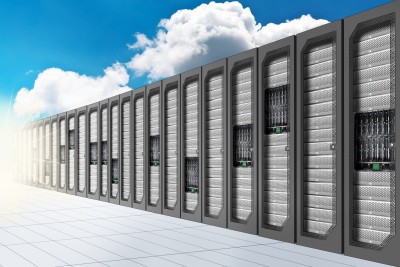Modern datacenters are deploying more and more servers every day, resulting in a "server sprawl." Yet, the average production server runs at less than 10-15% utilization1
For servers, virtualization allows the creation of multiple virtual machines on the same physical machine. Each virtual machine then has its own virtual hardware (e.g., CPU, memory, disk etc.) and is able to host a discreet operating system. This allows the use of multiple operating system instances and also makes it possible to run different operating systems such as Windows and Linux on the same physical hardware.
Virtualization technology is also being deployed in other datacenter tiers. For example, storage area networks (SAN), virtual local area networks (VLAN), and layer 7 switching are being employed to abstract the physical datacenter resources across multiple applications, centralizing equipment and saving cost.
Vcentra leverages virtualization technologies to provide the following advantages to our customers:
Data Center Consolidation and Containment
Server consolidation and containment allows Government agencies to:
- Deploy systems in hours rather than weeks or months. Automated provisioning further increases efficiency.
- Maximize datacenter floor space while removing unnecessary hardware. In some cases, hardware can be redeployed to provide additional capacity or functionality (such as disaster recovery, test, development, staging environments)
- Decrease the cost of rolling out new applications.
- Maintain application and operating system isolation and system tiers (web, application, database).
- Reduce electrical, HVAC, and datacenter expansion costs. This will allow Federal agencies to begin meeting EPA ENERGY STAR Program regulations, guidelines, and recommendations.
- Reduce CAPEX and OPEX by maximizing hardware utilization and reducing support personnel requirements.
- Increase stability by leveraging the fact that virtual hardware looks identical to the operating system, regardless of underlying physical hardware
Disaster Recovery Capability
Virtualization technologies allow government organizations to deploy a disaster recovery capability without the expense of "one-for-one" server deployments. A virtual disaster recovery site will provide:
- The same virtual hardware environment regardless of the physical hardware used.
- The ability to recover production systems regardless whether the production system is hosted on physical or virtual servers.
- The ability to test disaster recovery scenarios without impacting productions systems.
- Increased continuity of operations.
Accelerate Application Development
Software development efficiency is dramatically increased through the use of virtualization technologies. This is especially true for government organizations that outsource their software development. An organization that leverages virtualization technology can:
- Consolidate servers and desktops used in testing and development.
- Duplicate production environments into virtual machines for testing.
- Share complete environments between developers, government staff, and QA teams.
- Reduce time required to stand-up testing environments.
Remote Workers / Telecommuters
Virtualization can help government organizations meet Telecommuting public law securely and cost effectively. Centralizing end-user computer resources within secure facilities and logical containment walls provides the government with a highly secure environment without sacrificing end-user functionality.
1 According to Microsoft and Sun Microsystems estimates.






